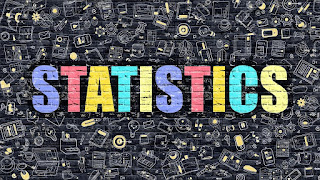Managerial Decision Making
MANAGERIAL DECISION MAKING
Introduction
·
Decision-making is a critical managerial
function, involving the selection of a course of action among alternatives.
·
Decisions in organizations are broadly
classified based on types and levels:
Types of Decisions
- Strategic
Decisions
- Long-term,
complex decisions taken by top management.
- Influence
the direction and scope of the organization.
- Example:
Entering a new market, mergers, or launching a new product line.
- Tactical
(Managerial) Decisions
- Taken
by middle management.
- Medium-term,
policy-based decisions to implement strategic goals.
- Example:
Allocating resources to departments, setting marketing plans.
- Operational
Decisions
- Taken
by lower-level managers or supervisors.
- Day-to-day,
routine decisions.
- Example:
Scheduling staff shifts, ordering supplies.
Levels of Decision-Making
|
Level |
Decision Type |
Responsibility |
Time Frame |
|
Strategic Level |
Strategic Decisions |
Top Management |
Long-term |
|
Tactical Level |
Tactical Decisions |
Middle Management |
Medium-term |
|
Operational Level |
Operational Decisions |
Supervisors/Line Managers |
Short-term/Daily |
Approaches to Decision-Making
A. Rational Approach
- Based
on logic, data, and analysis.
- Involves
clear problem identification, data collection, evaluation of alternatives,
and choosing the best option.
- Suitable
for programmed and structured decisions.
- Example:
Cost-benefit analysis for selecting a vendor.
B. Intuitive Approach
- Relies
on instinct, experience, and gut feeling rather than formal data.
- Common
in uncertain or novel situations where data is incomplete.
- Fast
but may lack consistency.
- Example:
Hiring a candidate based on personal judgment.
C. Bounded Rationality (Herbert Simon)
- Managers
aim to make rational decisions but are limited by information,
cognitive limitations, and time.
- They
"satisfice" – choose the option that is good enough, not
necessarily optimal.
D. Incremental Approach
- Small,
step-by-step improvements or decisions are made rather than drastic
changes.
- Often
seen in public policy and large bureaucratic organizations.
E. Political Approach
- Decision-making
is influenced by power, negotiation, and conflict among
stakeholders.
- More
relevant in organizations with conflicting interests.
F. Creative Approach
- Involves
brainstorming and innovation to arrive at novel solutions.
- Often
used in R&D, advertising, or start-ups.
Implications of Decision-Making on
Information Systems (IS)
A. Role of IS in Decision-Making
- Data
Collection & Storage: IS helps collect,
store, and organize vast amounts of data from internal and external
sources.
- Data
Analysis & Forecasting: Decision Support
Systems (DSS) and Business Intelligence tools analyze data to support
complex decisions.
- Real-time
Information Access: Enables faster and more
accurate decisions.
- Improves
Communication: Enhances coordination and
information sharing across departments.
B. Matching IS with Decision Types
|
Decision
Type |
Relevant
IS |
Function |
|
Strategic |
Executive Support System (ESS) |
Summarizes trends, forecasts, dashboards |
|
Tactical |
Management Information System (MIS) |
Reports, summaries, comparisons |
|
Operational |
Transaction Processing System (TPS) |
Routine data entry and processing tasks |
C. IS Helps in:
- Reducing
uncertainty in decision-making.
- Enabling
simulation and modeling to test decision outcomes.
- Supporting
collaborative decisions through groupware and communication tools.
- Providing
decision audit trails for accountability.
Video Description
· Don’t
forget to do these things if you get benefitted from this article
· Visit
our Let’s contribute page https://keedainformation.blogspot.com/p/lets-contribute.html
· Follow
our page
· Like
& comment on our post
·




Comments